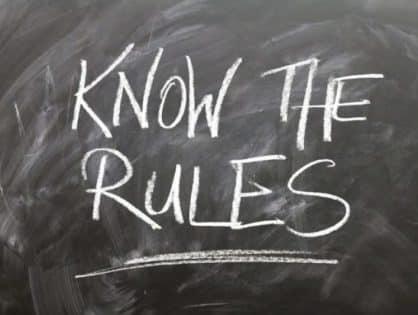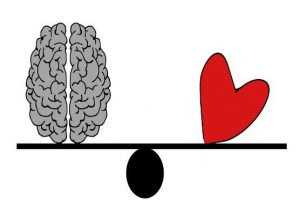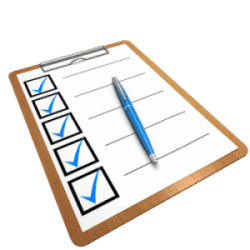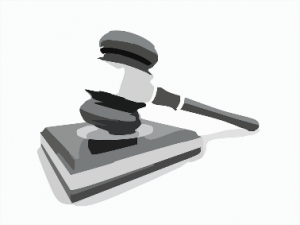The elaborative interrogation technique may sound like a spy how-to manual, but it is used to go beyond simply memorizing difficult concepts to understanding them. For example, you may be able to recite the three elements for res ipsa loquitur, but have no idea what they mean or how to apply them in a fact pattern. This method helps you remember and understand by having you ask how and why questions, thereby allowing you to see connections between the various concepts.
Compare and Contrast
As you use this technique you will compare and contrast ideas by asking how two concepts are similar and how they are different.
Let’s go back to our res ipsa loquitur example. You’ve memorized the three-part test for this concept and that is where most students stop. So when they get to the exam, they don’t do well because they really don’t understand how to apply res ipsa loquitur to get the maximum number of points.
In reality, these students learned how to recite a test that they did not truly understand.
Res Ipsa Loquitur Example
So step one is to connect res ipsa loquitur to what we do know. You might ask yourself, how does it connect to negligence? You then answer: it is connected to breach of duty.
Now go deeper. Ask yourself, how does res ipsa loquitur connect to breach of duty? It helps us determine if somebody breached their duty of care.
Go even deeper. Why do we need res ipsa loquitur? When the evidence against the defendant is circumstantial and not direct.
Don’t stop there; go deeper. What is circumstantial evidence? It is evidence that can be inferred from a fact that I know to be true. What is the effect of using res ipsa loquitur at trial?
Keep interrogating yourself and you will establish connections between interrelated concepts. Soon you will understand the concept better and expose gaps in your knowledge that will encourage you to do more research.
By the way, I strongly recommend that you go through this process in writing. It’s just too easy to skip steps or not see the gaps without writing it down or typing it out on your computer.
This technique will work very nicely with the Feynman technique, which I discussed in the episode “Learn Law Faster: The Feynman Technique.”
International Shoe v. Washington Example
Let’s try another example, this time using everybody’s favorite topic, civil procedure. You just read International Shoe v. Washington.
First questions: what is this case even about? How is it similar to Pennoyer v. Neff? How is it different from Pennoyer v. Neff?
Next questions: in real life, how does this case affect people? Do I still need personal jurisdiction after International Shoe?
More questions you could ask: what is personal jurisdiction? How does this case change personal jurisdiction?
See what we’re doing? We’re making multiple connections that will help you understand all the various aspects of the case.
Rationale
So why do you even need to use this technique? The reason you need it is because you don’t know what you don’t know. You need a process to move beyond knowledge to comprehension. By creating those connections between different concepts, you won’t be fooled by some strange fact pattern on exam day. Your professor sees those connections and will test you on your ability to see those connections, not on your ability to memorize a rule statement.
Don’t misunderstand me; you still need to memorize the rules–I recommend the Leitner box flashcard method. But law school exams require you to move beyond memorization into analysis—the kind of analysis that is only possible if you truly understand the material. For an interesting article on how students learn, check out this article on how students learn. Also, if you need help, you may want to look into working with a law school tutor.




 Let’s move on to some tips you can use to survive the cold call.
Let’s move on to some tips you can use to survive the cold call.

 In 1885, German psychologist Julius Ebbinghaus published his work called “On Memory.” For the first time in history, he quantified how quickly we forget by charting the “forgetting curve.” The most drastic forgetting occurs within the first hour and then begins to level off after one day. The good news is that you can benefit from Ebbinghaus’ breakthrough study. Given the rapid decline in our memory, the optimal time to review information is within the first 24 hours of first learning it. If you review your notes within 24 hours after class, you will make a stronger mental connection to that knowledge. This will help keep it in your memory longer. By repeating this process, not only will you retain the knowledge for the final, but also for the bar exam. For additional interesting information on how memory works, here is an article on
In 1885, German psychologist Julius Ebbinghaus published his work called “On Memory.” For the first time in history, he quantified how quickly we forget by charting the “forgetting curve.” The most drastic forgetting occurs within the first hour and then begins to level off after one day. The good news is that you can benefit from Ebbinghaus’ breakthrough study. Given the rapid decline in our memory, the optimal time to review information is within the first 24 hours of first learning it. If you review your notes within 24 hours after class, you will make a stronger mental connection to that knowledge. This will help keep it in your memory longer. By repeating this process, not only will you retain the knowledge for the final, but also for the bar exam. For additional interesting information on how memory works, here is an article on 
 If you are preparing to take the bar exam, the bar prep companies do a decent job in providing you with the black letter law. They do this by distilling the law found in hornbooks into something more manageable. But the law doesn’t always have a clear majority rule amongst the states. In that case, you are unlikely to find those rules on the uniform portions of the bar exam. For a few tips on what not to do more bar exam tips, check out this video on
If you are preparing to take the bar exam, the bar prep companies do a decent job in providing you with the black letter law. They do this by distilling the law found in hornbooks into something more manageable. But the law doesn’t always have a clear majority rule amongst the states. In that case, you are unlikely to find those rules on the uniform portions of the bar exam. For a few tips on what not to do more bar exam tips, check out this video on 
 In order for man to succeed in life, God provided him with two means, education and physical activity. Not separately, one for the soul and the other for the body, but for the two together. With these two means, man can attain perfection.
In order for man to succeed in life, God provided him with two means, education and physical activity. Not separately, one for the soul and the other for the body, but for the two together. With these two means, man can attain perfection. So what can you do to achieve some of these results? First, you need to get your heart rate up to 80-90% of its potential based on your age group. You can check this
So what can you do to achieve some of these results? First, you need to get your heart rate up to 80-90% of its potential based on your age group. You can check this 


 But here’s the twist: the first time you don’t meet your goal, BeeMinder will ask you for a credit card. And if you get off track a second time, BeeMinder will charge you five dollars. By having a disincentive to lose five dollars, you are more likely to keep your commitment.
But here’s the twist: the first time you don’t meet your goal, BeeMinder will ask you for a credit card. And if you get off track a second time, BeeMinder will charge you five dollars. By having a disincentive to lose five dollars, you are more likely to keep your commitment.
 The next element is to enter. The entering of another’s land results in trespass to land, including a single footstep that results in no actual damages. Entering can occur when: (1) a person enters the land; (2) a person refuses to leave the land after he was invited onto the land; (3) a person causes another person to enter the land; (4) a person causes an object to enter the land; or (5) a person fails to remove his personal property from the land.
The next element is to enter. The entering of another’s land results in trespass to land, including a single footstep that results in no actual damages. Entering can occur when: (1) a person enters the land; (2) a person refuses to leave the land after he was invited onto the land; (3) a person causes another person to enter the land; (4) a person causes an object to enter the land; or (5) a person fails to remove his personal property from the land.

